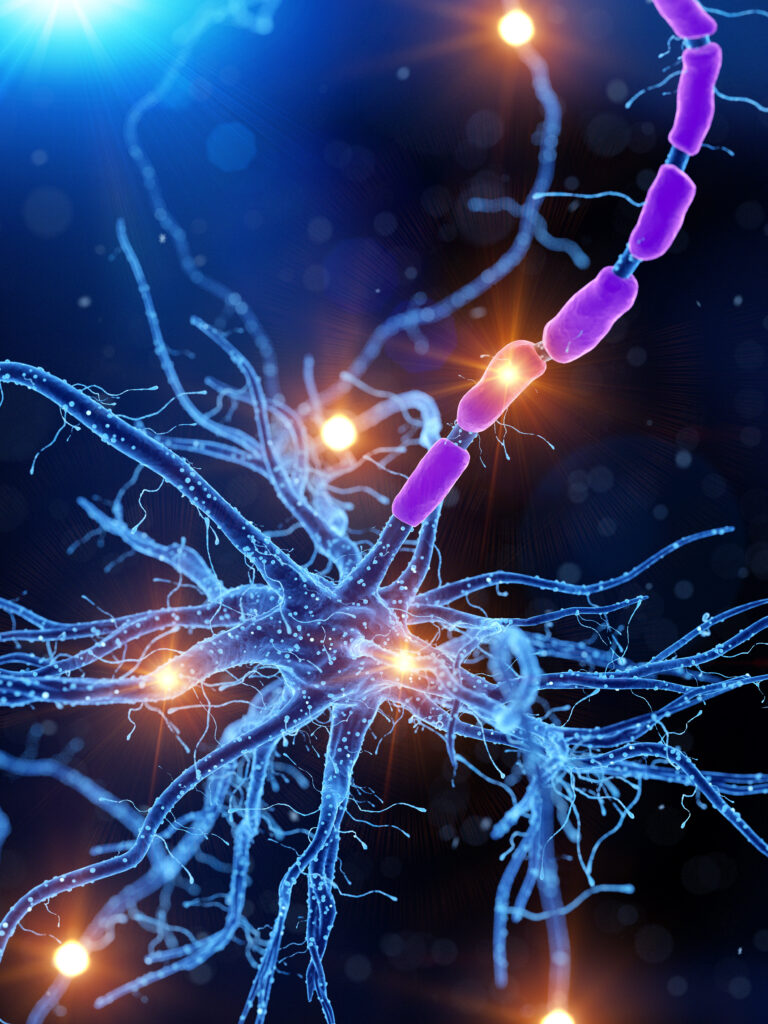**Understanding Inhibitory Neuron Dysfunction in Alzheimer’s Disease**
Alzheimer’s disease is a complex condition that affects the brain, leading to memory loss, confusion, and difficulty with daily tasks. One of the key areas of research in Alzheimer’s disease is understanding how inhibitory neurons, which help control the activity of other brain cells, become dysfunctional.
### What Are Inhibitory Neurons?
Inhibitory neurons are a type of brain cell that helps to calm down or slow down the activity of other brain cells. They are like the brakes in a car, preventing the brain from getting too excited and causing problems. In Alzheimer’s disease, these brakes start to fail, leading to an imbalance in brain activity.
### What Causes Inhibitory Neuron Dysfunction?
Researchers are still trying to figure out exactly what causes inhibitory neuron dysfunction in Alzheimer’s disease. However, they have found some clues. For example, studies have shown that early in the disease, changes in the way genes are expressed in inhibitory neurons can lead to problems. This means that the instructions for making these neurons work properly are not being followed correctly[1].
### How Does It Lead to Alzheimer’s Disease?
When inhibitory neurons don’t work correctly, the brain can become overactive. This overactivity can lead to the death of brain cells and the formation of amyloid plaques and tau tangles, which are hallmark features of Alzheimer’s disease. Essentially, the failure of inhibitory neurons creates an environment where the brain’s normal functioning is disrupted, leading to the symptoms we see in Alzheimer’s patients[4].
### What Can We Do to Change It?
To develop new treatments for Alzheimer’s disease, researchers are exploring several strategies. One approach is using growth factors like insulin-like growth factor 1 (IGF1) to help repair or replace damaged inhibitory neurons. Another strategy involves using stem cells to regenerate these cells. By understanding how inhibitory neurons work and what goes wrong in disease states, scientists hope to create more effective treatments for Alzheimer’s disease[1].
### Current Research
Researchers are using advanced techniques like spatial transcriptomics to study gene expression changes in inhibitory neurons from brain regions involved in memory and learning. This helps them understand how different subtypes of inhibitory neurons are affected by Alzheimer’s disease. They have already found that early in the disease, interneurons display changes in pathways related to neurodegeneration, energy metabolism, and protein processing[1].
### Conclusion
Inhibitory neuron dysfunction is a critical aspect of Alzheimer’s disease. By understanding the molecular insights into this dysfunction, researchers can develop targeted treatments to restore the balance of brain activity. This could potentially slow down or even stop the progression of Alzheimer’s disease, improving the lives of those affected by this condition. Further research is needed to uncover the exact mechanisms and to find effective ways to restore inhibitory neuron function, but the progress made so far is promising.





